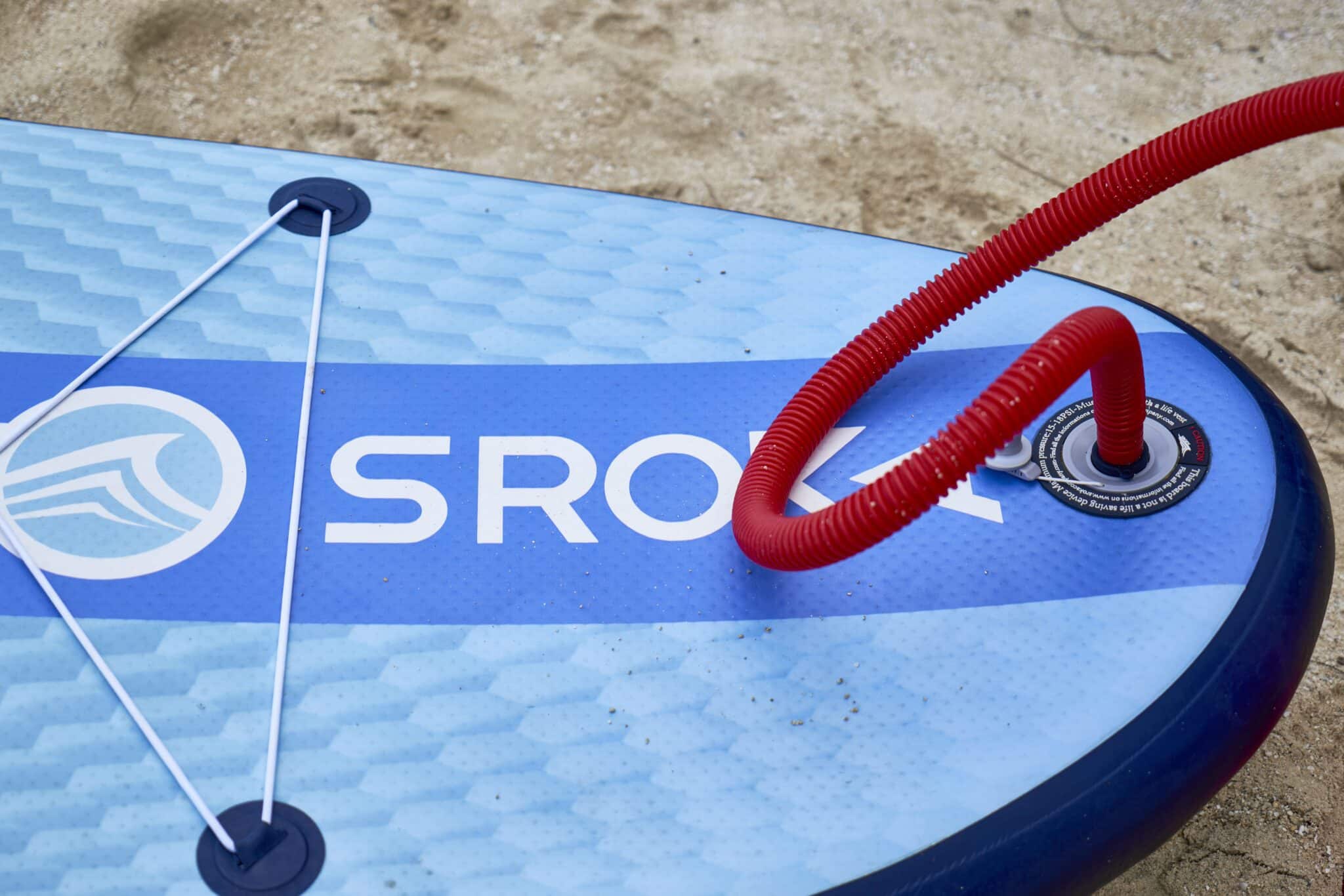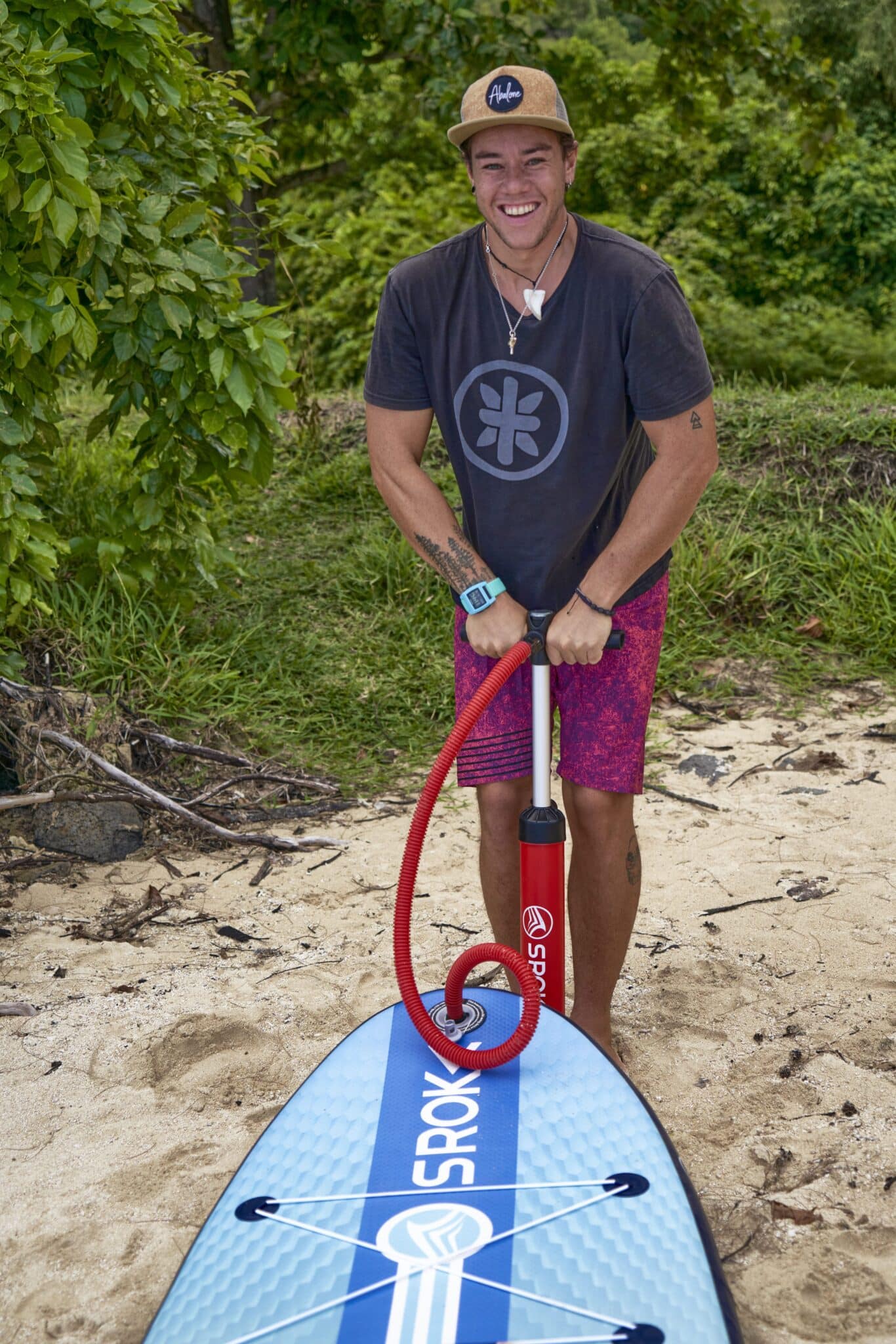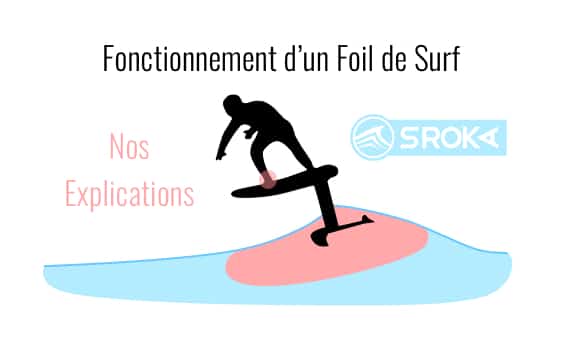Louis-Arnaud surf-foil in Mauritius, equipped with the Fast Flyer 4’6 board and the High Aspect 1190 Lift S-foil Summary Composition of a surf foil Principles …
How do you inflate an inflatable SUP?
Inflatable stand up paddle boarding or SUP attracts you and you want to take the plunge and equip yourself for the coming summer or spring. But once you reach the milestone, you wonder “how to inflate an inflatable paddle?”.
Problems with inflation are, although of negligible severity, very common. Follow this article to the letter and you will be sure to save yourself these few hassles.
An under- or over-inflated paddle board is a problem:
- When under-inflated, it may “go banana-like” and deteriorate quickly due to the different folds it causes.
- Overinflated, your SUP risks seeing its PVC welds peel off or even its drop stitch (inner part that connects the deck and the hull and allows you to keep a flat paddle) at the risk of seeing it become a sausage.
So let’s first check your equipment, then talk about the key points of preparing your paddle before inflation and finally some more tips just after seeing the inflation itself.
The necessary equipment
What equipment do we need to inflate your paddle? Approximately everything that is in the package you ordered. That is to say:
- SUP (of course)
- The high-pressure pump
- Fins
- The valve disassembly wrench

Preparing to inflate the paddle
First of all, it is important to find a suitable place to inflate your SUP, avoid areas that could damage it such as stones or asphalt if you were to have to inflate it in a parking lot. (In the event that you have no choice, use the storage bag to protect your paddle from abrasion from the ground.)
Also choose a place sheltered from the wind when it is strong, to prevent your paddle from flying away and risking injury or damage.
Before you start inflating, unfold your SUP and check that it is in good condition. Also check that your pump is functional and that your fins are suitable for the reserved spaces on the hull of your SUP. Using the valve disassembly wrench, check that the valve is properly tightened, which could cause leaks.

Steps to inflate a stand up paddle board
Your paddle is now deployed, in a secure place and your equipment functional.
- Start by connecting your pump to your SUP. To do this, check that the valve preventing the air from leaving is in the inflation position, i.e. that the central part is coming out. If this is not the case, turn it a quarter turn, squeezing it lightly to put it in the right position.
- Next, connect the pump hose by a quarter turn in a clockwise direction. Be careful, it is possible that the stress caused on the hose will cause it to rotate on its own in the opposite direction, in this case, it will be necessary to pre-stress the pump hose in the other direction before connecting it so that it stays in place without your help.
- You can now inflate your paddle to the pressure indicated around the valve or in the user manual. Start with the pump in mode 2 and then finish with mode 1 when mode 2 becomes too difficult.
- Once the recommended pressure is reached, disconnect the pump from the SUP and close the valve cap. Finally, check that your paddle is rigid and that it does not have an appendage that would prevent a possible breakage.
SROKA tips:
The pressure of the paddle varies depending on the activities you want to do or your weight. For example, if you are embarking on a downwind SUP, lowering your pressure slightly will allow you to wind the waves better and thus avoid crashing and therefore slowing down between the swell trains.

Additional Tips
In order to guarantee an exceptional lifespan of your Stand up paddle, make sure to never leave it in the sun when you are not using it, especially in summer when the temperature rises. For your information, the human pain threshold is around 60 degrees or even slightly below, this is a benchmark, on days when you cannot put your hand on a black surface (car) the temperature of your paddle in direct sunlight may explode in addition to being worn by UV rays.
Conclusion
In short, choose a place where you are not at risk of damaging your equipment, check it and pay attention to the pressure you apply to your paddle. Once swollen, beware of the sun which can wreak havoc in the summer.
Finally, always make sure to practice safely, avoid very windy or cold days if you are not equipped accordingly. Also be careful, summer does not always rhyme with hot water, beware, even in 30 degrees outside, hypothermia is always possible when the water is at 17 degrees, as is often the case in windy regions.
How do you inflate a paddle board? Now you have the answer. All you have to do is go and enjoy yourself on the water. Many other articles are available on our website to help you in your paddle practice, do not hesitate to take a look!
The SROKA team.
If you still have questions about this, or for any other request, please do not hesitate to contact us !
Article you may be interested in
Did you know that paddle boarding is a great way to strengthen your body? Not only does this activity allow you to escape on the …
Are you looking for an inflatable paddle board for the summer to sail at sea or in lakes? The inflatable paddle board really has a …
What is Wing Foil? Wing Foil is the latest in board sports. This consists of manipulating a wing held with both hands (“wing”) with a …





